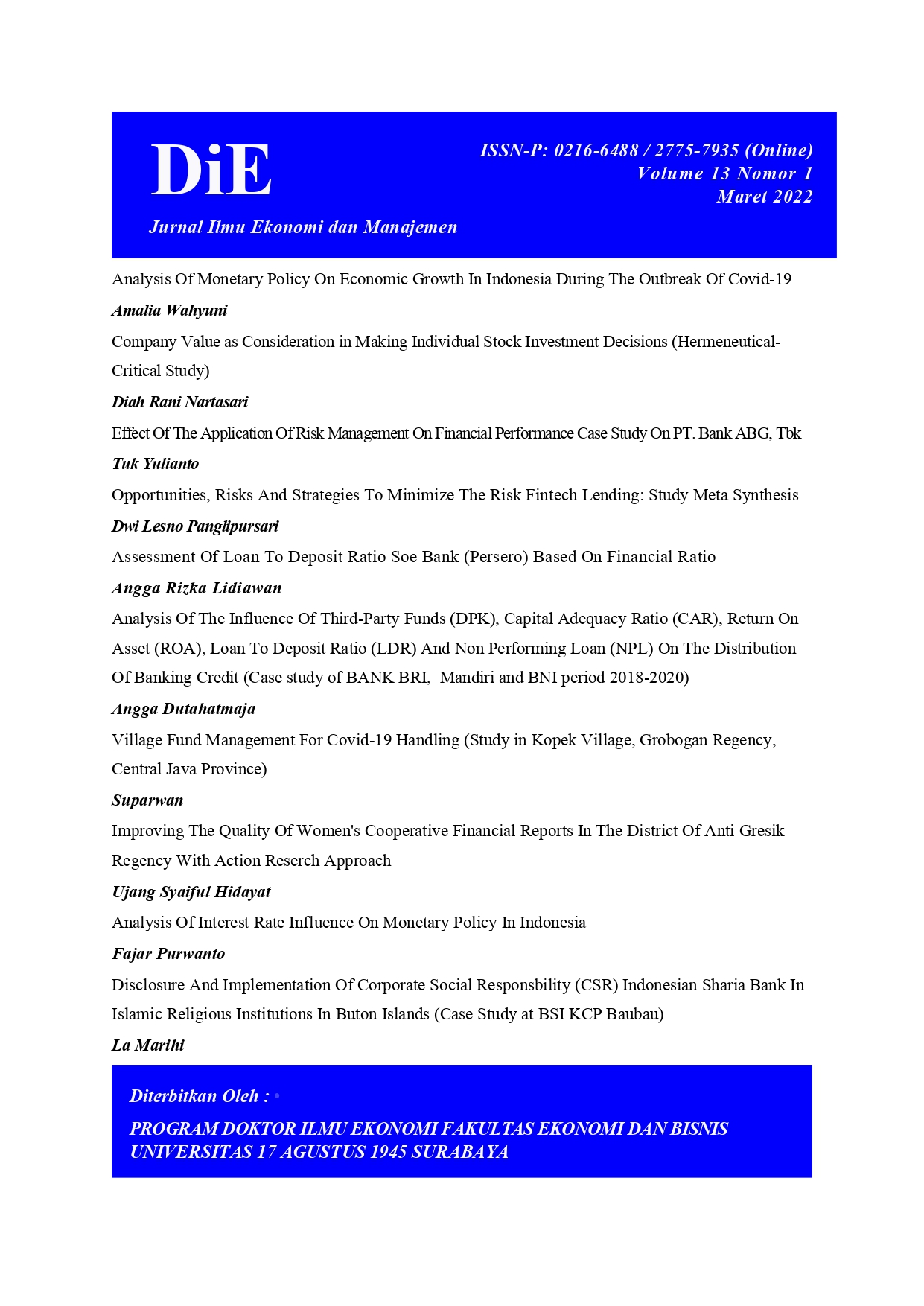Analysis Of The Influence Of Third-Party Funds (DPK), Capital Adequacy Ratio (CAR), Return On Asset (ROA), Loan To Deposit Ratio (LDR) And Non Performing Loan (NPL) On The Distribution Of Banking Credit
Abstract
Research Objective: the purpose of this study is to examine the dominant factors that affect the amount of bank credit. The selection of these factors is based on the results of previous research studies. The purpose of this study was to determine the effect of third party funds (DPK), capital adequacy ratio (CAR), return on assets (ROA), non-performing loans (NPL) and loan to deposit ratio (LDR) on bank lending partially.
Research Method: this research method uses quantitative research methods. The number of samples in this study were three state-owned banks registered with the OJK, namely Bank BRI, Bank BNI and Bank Mandiri for the period 2018-2020 (quarterly data). The data analysis methods used are classical assumption test, multiple regression analysis and t test with SPSS 26 program.
Research Result: the results of this study that the variables of Third Party Funds and Loan toDeposit Ratio variables have a positive and significant effect on lending while the variables ofCapital Adequacy Ratio, Return to Assets and Non Performing Loans have no effect on lending.
Keywords: third party funds, capital adequacy ratio, return on assets, non-performing loans, loan to deposit ratio, lending
Downloads
The author who will publish the manuscript at DiE: Jurnal Ilmu Ekonomi dan Manajemen, agree to the following terms:
1. Authors retain copyright and grant the journal right of first publication with the work simultaneously licensed under a Creative Commons Attribution ShareAlike License that allows others to share the work with an acknowledgment of the work's authorship and initial publication in this journal.
2. Authors are able to enter into separate, additional contractual arrangements for the non-exclusive distribution of the journal's published version of the work (e.g., post it to an institutional repository or publish it in a book), with an acknowledgment of its initial publication in this journal.
3. Authors are permitted and encouraged to post their work online (e.g., in institutional repositories, pre-prints sites or on their website) prior to and during the submission process, as it can lead to productive exchanges, as well as earlier and greater dissemination of published work




